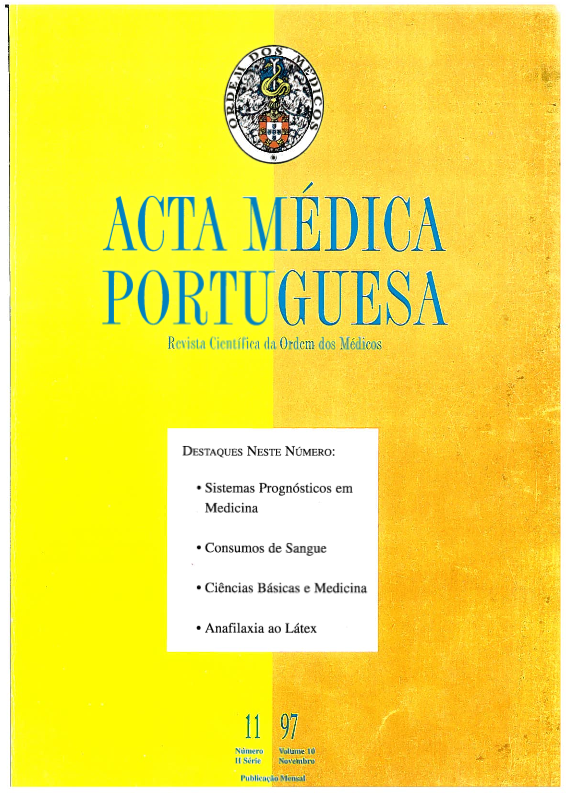Risk stratification and prognosis in critical surgical patients using the Acute Physiology, Age and Chronic Health III System (APACHE III).
DOI:
https://doi.org/10.20344/amp.2504Abstract
Outcome prediction in critical surgical patients admitted to intensive care units (ICU) has been established using several scoring systems. To evaluate the predictive performance of the Acute Physiology, Age and Chronic Health Evaluation (APACHE III) scoring system in these patients, we studied a population admitted to a surgical ICU in our University Hospital.We collected prospective data on 220 consecutive patients admitted over a period of 12 months. APACHE III (A3) scores were obtained over the first 24 hours of ICU admission (APACHE II scores were also calculated); data also included age, sex, acute and chronic diseases, ICU and hospital length of stay (LOS), patient location prior to ICU admission and outcome. The relationship of hospital mortality with A3 scores was analyzed using logistic regression, with the discriminatory power of these systems being assessed by the area under the ROC curve and percentage of correct classification.Patient's mean age was 57 +/- 17 years and 44% were male; 53.6% were elective and 46.4% were emergency postoperative patients; 5% of patients had co-morbidities; ICU mortality rate was 10% and in-hospital mortality rate (HMR) was 15%; mean ICU LOS was 3.9 +/- 5.6 days and mean hospital LOS was 9.4 +/- 8.2 days; mean scores were: APACHE III = 33 +/- 2 and APACHE II = 9 +/- 6 points. There was a significant relationship between ascending A3 scores and HMR. APACHE III had a correct classification rate of 87.3% and an area under the ROC curve of 0.830.In a population of critical surgical patients admitted to our ICU the APACHE III scoring system demonstrated an excellent prognostic performance as measured by contingency tables and areas under the ROC curve; this system can be a useful tool for outcome prediction in critical surgical patients.Downloads
Downloads
How to Cite
Issue
Section
License
All the articles published in the AMP are open access and comply with the requirements of funding agencies or academic institutions. The AMP is governed by the terms of the Creative Commons ‘Attribution – Non-Commercial Use - (CC-BY-NC)’ license, regarding the use by third parties.
It is the author’s responsibility to obtain approval for the reproduction of figures, tables, etc. from other publications.
Upon acceptance of an article for publication, the authors will be asked to complete the ICMJE “Copyright Liability and Copyright Sharing Statement “(http://www.actamedicaportuguesa.com/info/AMP-NormasPublicacao.pdf) and the “Declaration of Potential Conflicts of Interest” (http:// www.icmje.org/conflicts-of-interest). An e-mail will be sent to the corresponding author to acknowledge receipt of the manuscript.
After publication, the authors are authorised to make their articles available in repositories of their institutions of origin, as long as they always mention where they were published and according to the Creative Commons license.









